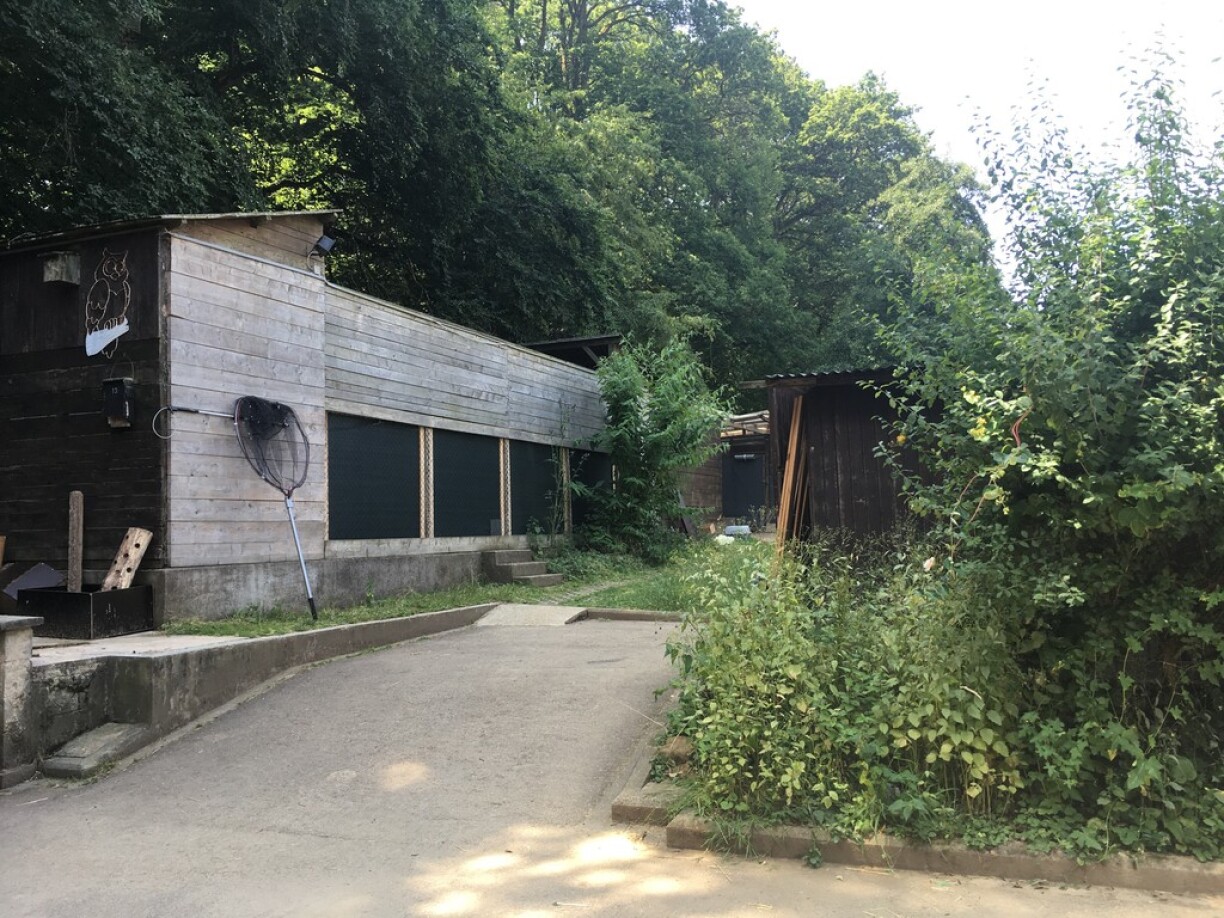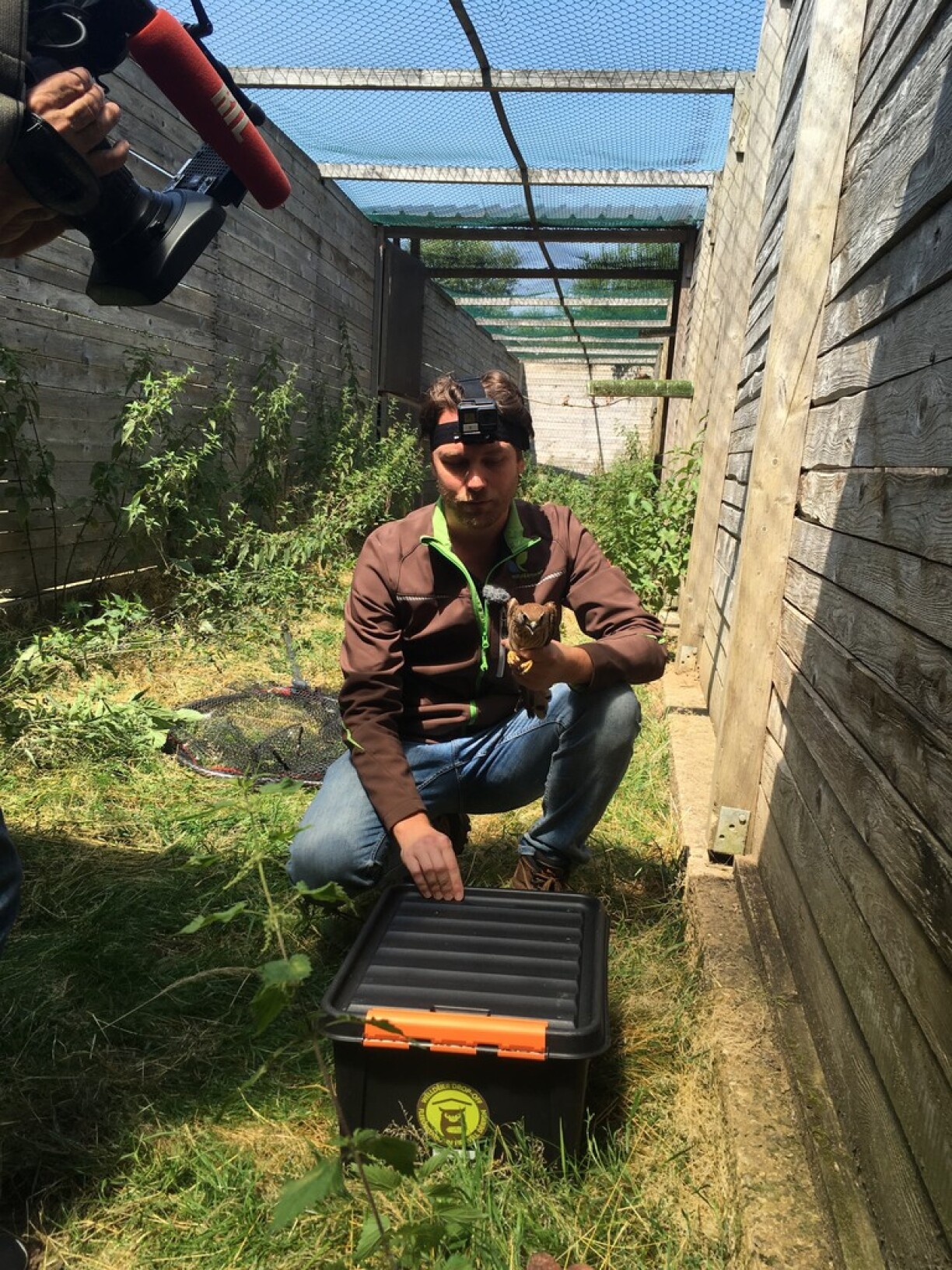
Every year, the wildlife station reintroduces around 1,500 animals into the wild. RTL Radio Luxembourg’s Nadine Gautier was able to witness the station release eight kestrels and six foxes back into the wild.
The foxes for one were excited, jumping around their crates. Whilst you can’t see into the crate due to the wooden panels, you could certainly the noise from the foxes moving around the moment Raf Stassen, the director of the station, and his colleagues began preparing for the release into the woods.
The animals are anxious and a similar anxiety is experienced amongst the staff. They kept on asking ‘Have we got all six foxes?’. As Stassen explains, sometimes staff members might miscount the animals, or the animals hide before the crates are brought into the enclosures to be released. To tackle this latest issue, the staff put the wooden crates into their cages so they can get used to its scents.
As for the actual release, the six animals are brought to the woods, where they are kept inside caged enclosures for two weeks before the doors are opened. Staff and volunteers continue to feed the foxes, although they reduce the amount gradually to allow the foxes to hunt for themselves. The foxes do find a small reserve within the enclosure if required.

This type of release is referred to as a ‘soft release’. The situation is different when it comes to animals that were only homed at the station for a short while and already had a territory. In this scenario, animals are released without the release being gradual. The same applies to lightly injured birds, who are subject to a ‘hard release’. This is the case for the eight kestrels. These birds were kept for eight weeks and then set free.
As Strassen explained, the kestrels do have to be trained to hunt with live mice in order for the wildlife station to ascertain whether they are capable to hunt. Over the course of the year 45 young kestrels were handed into the station.
The procedure depends on the animal in question. The wildlife station has to test whether they’re ready or even meant to be released into the wild. This is especially the case with feral cats. The station tests whether these are real feral cats or hybrids. If the latter, the station neuters the cats in question.
Given the nature of the station’s rehabilitation work, there is also the sad reality that some animals do not make it to the release day. Some animals are unable to cope with their injuries or adjusting when they arrive at the station. During the filming of the below segment, a kingfisher was brought to the station. The couple that brought the kingfisher in had cared for it at home for two days. However, by the time it arrived in Dudelange it was too weak and died minutes later.
The wildlife station uses this cautionary tale to urge residents not to keep injured animals at home. Whilst they have good intentions, it is better to bring them straight to the sanctuary to allow experts to do their jobs.
The wildlife station is celebrating its 30th anniversary this year with open days later this month, namely on 14 an 15 September. Visitors can find out about the station’s work and get a better understanding of animal rehabilitation.
Video report showing the release of the foxes and kestrels. In Luxembourgish.
30 years of the wildlife station (1): Fantastic beasts and where to tend them
30 years of the wildlife station (2): Dudelange animal care station always in need of volunteers
30 years of the wildlife station (3): Four drop off points for wildlife in the Grand Duchy
30 years of the wildlife station (4): Raccoons are not cuddly pets